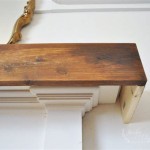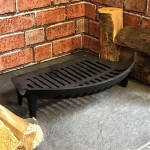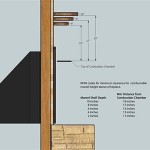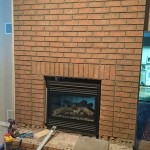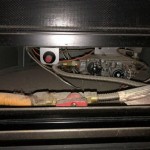Modern Indoor Fireplaces: A Guide to Contemporary Hearth Designs
In the realm of interior design, fireplaces have long held a cherished place as focal points of warmth, ambiance, and gathering spaces. Today, the modern indoor fireplace transcends its traditional role, evolving into a sophisticated design element that seamlessly integrates with contemporary living spaces. Modern fireplaces are characterized by clean lines, minimalist aesthetics, and innovative technologies, offering both visual appeal and practical functionality. This article delves into the world of modern indoor fireplaces, exploring key design features, fuel options, and installation considerations.
Modern Fireplace Design: A Symphony of Style and Functionality
Modern indoor fireplaces are defined by their sleek and minimalist designs, prioritizing clean lines, geometric shapes, and a focus on the flames themselves. Materials commonly employed in modern fireplace design include polished steel, brushed nickel, glass, and natural stone, adding a touch of elegance and sophistication to any room. The fireplace itself becomes an integral element of the overall interior design, often integrated into built-in media units, shelves, or entertainment centers. This seamless integration creates a cohesive and contemporary aesthetic.
The use of glass is particularly prevalent in modern fireplace design, allowing for a panoramic view of the flames. Large glass panels, whether framed or frameless, create a sense of openness and visual interest, while also ensuring safe viewing. Some modern fireplace designs incorporate hidden or recessed fireboxes, further minimizing visual clutter and maximizing the impact of the flames. Modern fireplaces may also feature unique features like floating hearths, built-in seating, or integrated lighting systems.
Beyond aesthetics, modern fireplaces are designed with functionality in mind. Efficient heating systems, often incorporating ventless or direct-vent technologies, ensure that the fireplace provides warmth without compromising indoor air quality. Smart home integration is also becoming increasingly common, allowing homeowners to control their fireplaces remotely through smartphone apps or voice assistants. This level of convenience enhances the overall user experience, making modern fireplaces a practical and enjoyable addition to any home.
Fuels for Modern Fireplaces: Beyond Traditional Wood
Modern fireplaces offer a range of fuel options, catering to diverse preferences and lifestyle choices. Gone are the days of relying solely on wood as a fuel source. Today, homeowners have access to a variety of clean-burning and eco-friendly alternatives, including:
Gas: Gas fireplaces are gaining popularity for their convenience and efficiency. They require no wood chopping or ash removal, and many models feature advanced controls for precise flame adjustments. Gas fireplaces can be natural gas or propane-fueled, depending on available utilities.
Ethanol: Ethanol fireplaces offer a clean and smokeless alternative to traditional wood-burning fireplaces. Ethanol is a biofuel derived from plant materials, making it a renewable resource. Ethanol fireplaces are often ventless, requiring minimal installation and making them suitable for smaller spaces.
Electric: Electric fireplaces provide a convenient and cost-effective option, mimicking the look and feel of a real fireplace without the hassle of fuel sourcing. Electric fireplaces use electric heating elements to produce the illusion of flames and heat, often with realistic log displays and background sounds.
Installation Considerations: Choosing the Right Fireplace for Your Home
Installing a modern indoor fireplace involves careful consideration of several factors, including:
Space: Modern fireplaces come in a variety of sizes, from compact inserts to large freestanding units. Carefully assess the available space and ensure the chosen fireplace complements the overall room design.
Fuel Type: Determine the most suitable fuel source based on your preferences, budget, and available utilities. Gas connections, electrical outlets, or ethanol fuel availability may influence your decision.
Venting: Some fireplaces require venting to the exterior, while others are ventless. Venting options include direct-vent, which uses a separate vent pipe, or ventless models, which use a catalytic converter to exhaust fumes safely.
Maintenance: Each fuel type comes with its own maintenance requirements. Gas fireplaces require regular inspections of the gas lines and appliances. Ethanol fireplaces require periodic cleaning of the burner and fuel tank. Electric fireplaces typically require minimal maintenance.
Professional Installation: For optimal safety and performance, it is highly recommended to engage a qualified and experienced fireplace installer. They will ensure proper installation, venting, and inspection, ensuring your fireplace meets local building codes and regulations.

Red Hot Fireplace Ideas

Contemporary Fireplace Filiofocus By Focus Japanese Style Free Standing Freestanding Home

A Guide To Choosing The Best Indoor Fireplace Increase Comfort

Indoor Fireplace S

Unveiling The 63 Best Modern Fireplace Design Ideas In 2024 Chimney

Modern Indoor Fireplaces Flare

Elegant And Stylish Designs For Contemporary Fireplaces Blog

51 Modern Fireplace Designs To Fill Your Home With Style And Warmth

51 Modern Fireplace Designs To Fill Your Home With Style And Warmth

Modern Indoor Fireplaces Flare Electric Fireplace



